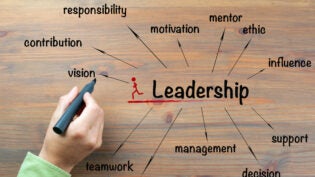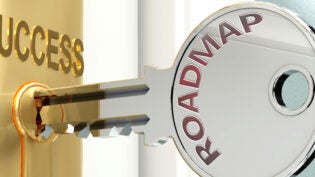
As a member of a Black ethnic minority, I have experienced the negative repercussions of unconscious bias first-hand that result in soaring stress levels, minority under-representation in senior roles, and the stifling of promising careers. Because of these experiences, I have now cracked the code for calling out unconscious workplace bias and stopping it in its tracks.
We’re all conditioned toward bias
Unconscious bias is driven by negative societal conditioning that favors one group over another. The unconscious part is critical. Those exhibiting the bias are unaware of the impact of their conduct. In the workplace it feeds negative stereotypes that show up in conduct or decisions unfairly directed at individuals or groups. It fails to recognize each individual’s unique worth.
Obstacles to speaking up
All people have a propensity to become defensive, embarrassed, upset, or annoyed when they’re on the receiving end of an accusation of unconscious bias. But the alternative to calling out unconscious bias — to suffer in silence and say nothing — builds tension that leads to anger and resentment in both traditional and non-traditional victims of bias.
A pioneering approach
I understand how, left unresolved in the workplace, unconscious bias lays fertile ground for toxicity to flourish. Yet when staff members have the appropriate skills to navigate inevitable workplace bias, it removes tension, builds trust and cohesion, and drives high performing winning teams. Therefore, when staff members sense career-stifling unconscious bias towards themselves or others, they can engage in dispassionate enquiry of which the most basic form is simply asking, “I don’t understand?” This statement turned into a question isn’t accusatory or aggressive, yet it cuts to the core of the issue at hand. Because the line of enquiry is non-accusatory and impartial, it gives the perpetrator the benefit of the doubt, allowing for the victim’s potential misinterpretation — or unconscious “reverse bias.” It also allows the unconscious bias infraction to be discussed and resolved collaboratively.
Pointing out what doesn’t work
Too often, organizations employ models of tackling workplace bias that don’t equip or empower traditional (and non-traditional) victims. Instead, they rely solely on one-way street strategies of building awareness in hopes that traditional perpetrators work on themselves to reduce bias-related behaviors. But this doesn’t recognize the multidirectional nature of workplace bias in the moment that proliferates the imbalanced “guilty perpetrator versus hapless victim” mindset. Traditional victims are left reliant on the sensitivities and awareness of the perpetrator in order to be supported, leaving them as perpetual hapless victims. Further, it promotes a state of guilt in perpetrators, which often turns to resentment. The solution to the problem of unconscious bias in the workplace is not for the traditional perpetrator (those who are usually White, male, heterosexual, and able-bodied) to change how they think and behave in isolation.
A do-together strategy for tackling workplace bias
I encourage organizations to unsubscribe from strategies predicated on one-way street (unidirectional) views of workplace bias. This means accepting the following:
– Multidirectional nature of work bias, which is a two-way street
– Traditional victims of bias have as much of a role to play in dismantling workplace bias as traditional perpetrators
– There’s an over reliance on the structural dismantling of workplace bias that perpetuates the “guilty perpetrator vs. hapless victim” mindset
– Unidirectional strategies exclude traditional victims from the resolution model and sustain the imbalanced status quo of minority under-representation
Both traditional perpetrators and victims must be taught how to collaboratively navigate bias by equipping everyone — including leaders, along with members of the majority and minority staff — with the “I don’t understand?” (IDU?) call out process. He encourages engaging in dispassionate enquiry in the moment of the perceived bias as an opening for non-confrontational dialogue. This equips minorities, marginalized groups, and the majority to effortlessly call out multidirectional bias whenever they sense it, without invoking guilt, resentment, or defensiveness. IDU? invites an explanation or elaboration from the sensed perpetrator. Always allow for the potential of misinterpreting the situation — that it might be a case of “reverse bias” in minorities or “sensed certainty” of reverse bias in the majority. Engaging in a collaborative dialogue allows those involved to effectively transcend the problem.
Conduct your own bias navigation assessment
From my research and direct experience, I have developed a 90-second quiz to serve as a first step in helping organizations determine what workplace bias navigation strategy they are unconsciously using at the moment, and then establishing what the right bias navigation strategy is for them going forward. Click here to take the assessment.
 Author: Buki Mosaku is Founder and CEO of London-based DiverseCity Think Tank, a workplace-bias and diversity-and-inclusion consultancy. He is one of the world’s foremost bias-navigation experts. Mosaku has cracked the code for calling out unconscious workplace bias and stopping it in its tracks, which he details in his new book, I Don’t Understand: Navigating Unconscious Bias in the Workplace (Business Expert Press, Aug. 23, 2023). Learn more at www.bukimosaku.com.
Author: Buki Mosaku is Founder and CEO of London-based DiverseCity Think Tank, a workplace-bias and diversity-and-inclusion consultancy. He is one of the world’s foremost bias-navigation experts. Mosaku has cracked the code for calling out unconscious workplace bias and stopping it in its tracks, which he details in his new book, I Don’t Understand: Navigating Unconscious Bias in the Workplace (Business Expert Press, Aug. 23, 2023). Learn more at www.bukimosaku.com.
1249 Views












